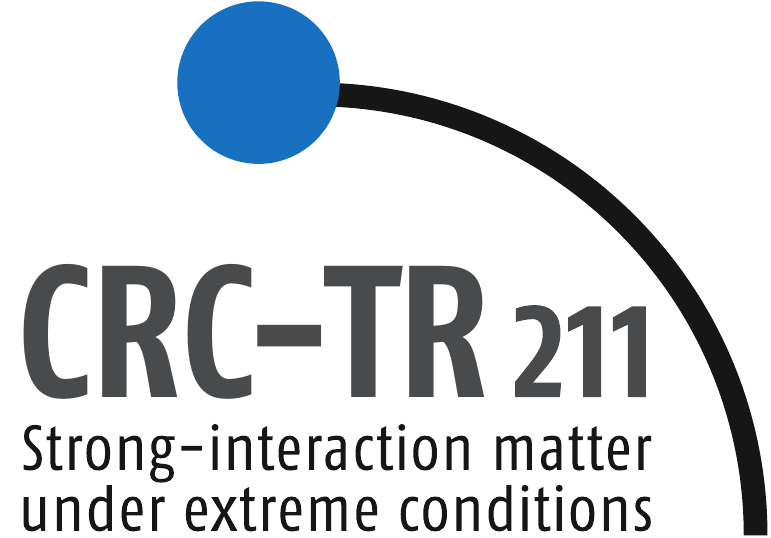\( \newcommand{\dd}{\mathrm{d}} \) \(
\DeclareMathOperator{\sign}{sign} \) \(
\newcommand{\pvec}[1]{\vec{#1}^{\,\prime}} \) \(
\newcommand{\R}{\mathbb{R}} \)
\( \newcommand{\dd}{\mathrm{d}} \) \(
\DeclareMathOperator{\sign}{sign} \)
 Transport Meeting
Transport Meeting
Venue: Physics Building, Max-von-Laue-Str. 1, PHYS 02.116
Time: Thursday, November 28, 2:15pm (s.t.)
Contact: hees@itp.uni-frankfurt.de
Kinetic freeze-out temperature from yields of
short-lived resonances
Anton Motornenko
A method to determine the kinetic
freeze-out temperature in heavy-ion collisions from measured yields of
short-lived resonances is presented. The resonance production is treated
in the framework of thermal model with an evolution between chemical and
kinetic freeze-outs. The yields of many short-lived resonances are
suppressed at $T = T_{\rm kin} < T_{\rm ch}$. A fit of $T_{\rm kin}$
allows to describe the abundances of both, the stable hadrons and the
short-lived resonances, like $\rho^0$ and $\text{K}^{*0}$, as measured by
the ALICE collaboration at the LHC as a function of centrality. This
allows to extract $T_{\rm kin}$ from the measured hadron and resonance
yields alone, independent of assumptions about the flow velocity profile
and the freeze-out hypersurface. The extracted $T_{\rm ch}$ values exhibit
a moderate multiplicity dependence whereas $T_{\rm kin}$ drops, from
$T_{\rm kin} \simeq T_{\rm ch} \simeq 155 \, \text{MeV}$ in peripheral
collisions to $T_{\rm kin} \simeq 110 \, \text{MeV}$ in 0-20% central
collisions. Predictions for other short-lived resonances are presented. A
potential (non-)observation of a suppressed $\text{f}_0(980)$ meson yield
will allow to constrain the lifetime of that meson.
The talk will be live-streamed (but not recorded) via Vidyo under
https://vc.uni-frankfurt.de/join/idcqq8I3y2FCW6p8DTQF9CTQJc
Nuclear Physics Colloquium Homepage
 Transport Meeting
Transport Meeting
 Transport Meeting
Transport Meeting